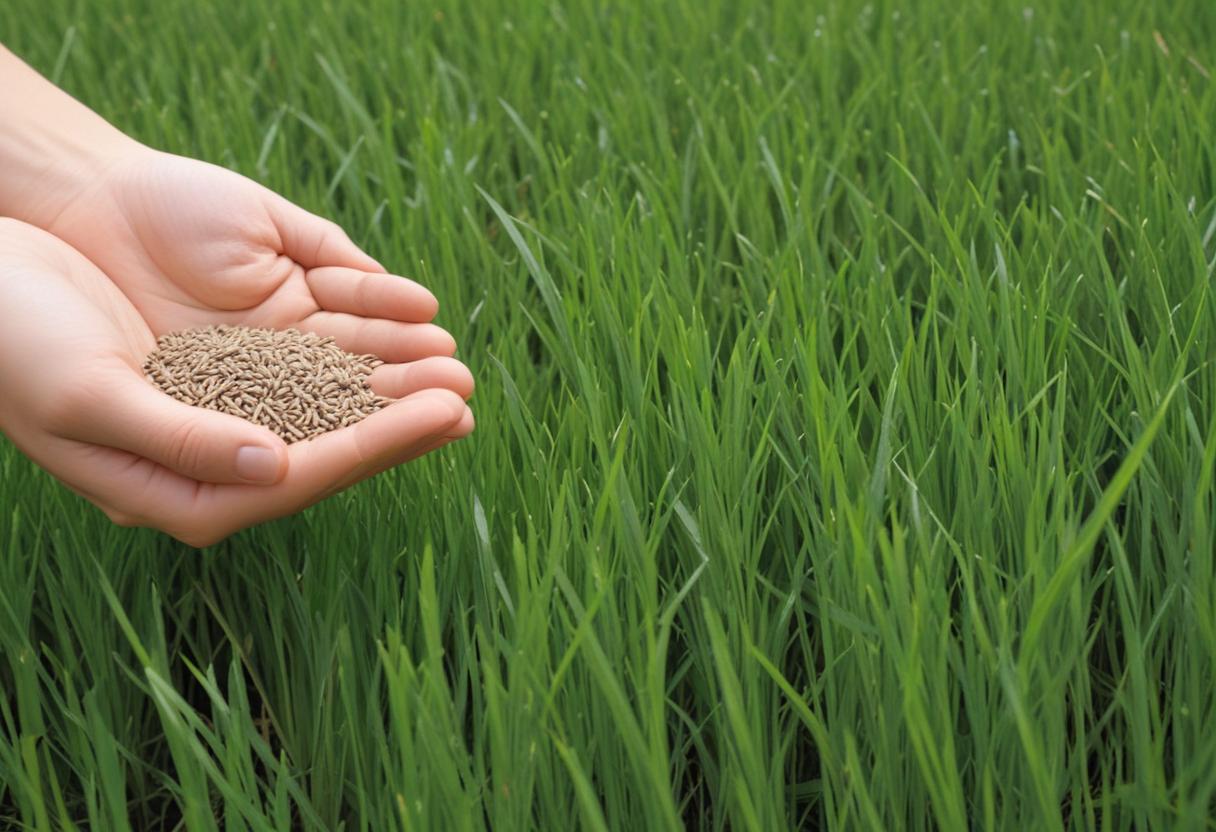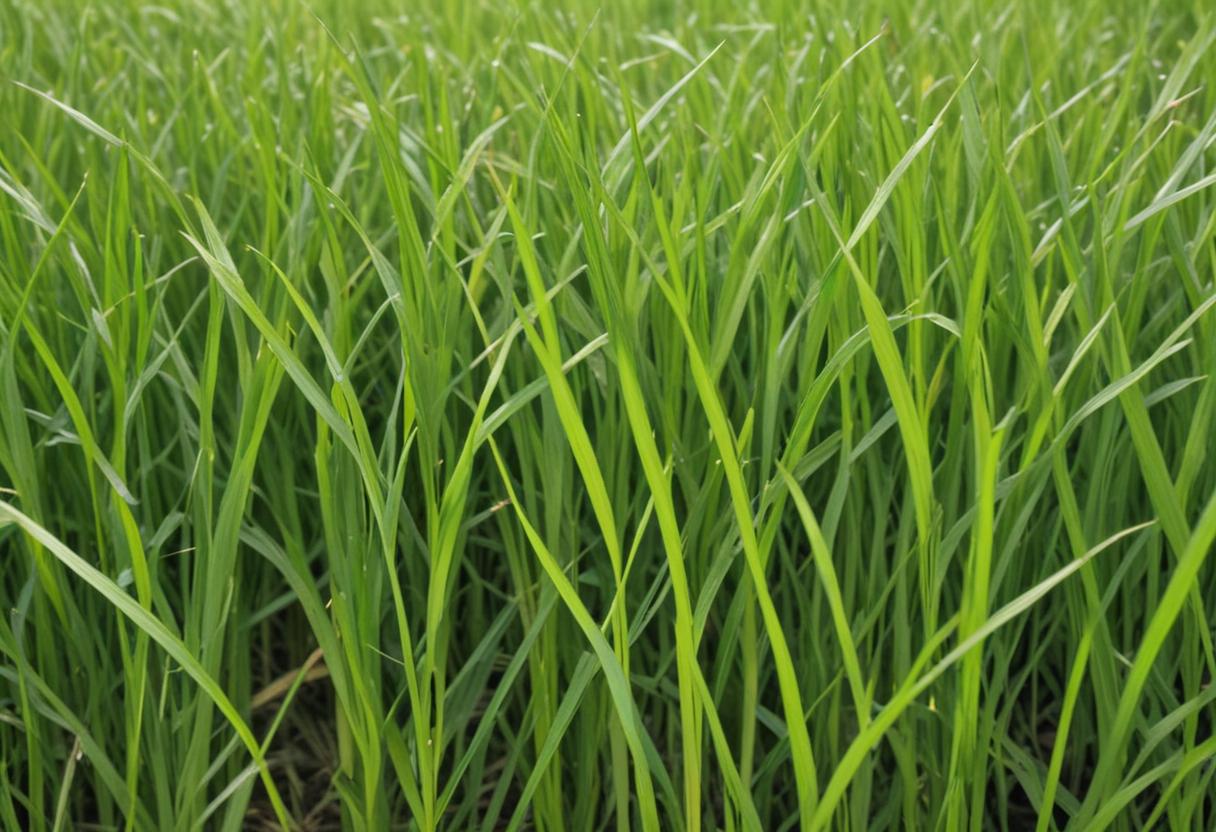Health
Tall Fescue Grass Seed: What You Need To Know

Tall fescue grass seed is a popular choice for homeowners and landscapers seeking a resilient, low-maintenance lawn. Its adaptability to various climates and soil types makes it a versatile option for many regions. In this article, we’ll explore the key aspects of tall fescue grass seed, including its characteristics, benefits, planting guidelines, and maintenance tips.
Understanding Tall Fescue Grass
It’s an impressive feature of tall fescue (Festuca arundinacea) that it can withstand the stresses of the scorching summer sun due to its long, deep root system. Native to Europe, it quickly spread into North America, rapidly becoming the grass of the region’s lawns with its reputation for tolerating heat as well as it did cold. Though some grasses use stolons or rhizomes for spreading, most tall fescues bunch, making them less invasive but also very easy to manage. These days, concentrated efforts have been made in improving the appearance of turf-type tall fescues-finer leaf texture and darker green color for better-looking, lush lawns.
Benefits of Tall Fescue Grass Seed
Adaptability is among the most striking qualities of tall fescue. It takes advantage of a wide variety of climates, including the cooler areas of the northern US and the warmer transition areas. Its deep root system ensures that it obtains water from the deepest part of the soil, therefore giving it high drought tolerance. Tall fescue also has high shade tolerance, therefore suitable for lawns with different sunlight exposure.
Its wearability is also quite good, the product can bear the high load of foot traffic, so it is suitable for families with kids or pets. In addition, tall fescue is relatively disease and pest resistant, leading to a decreased dependence on chemical control.

Planting Tall Fescue Grass Seed
Establishing a tall fescue lawn begins with proper planting. The best time to seed is in early fall when soil temperatures are favorable for germination and weed competition is limited. It is fundamental to prepare the soil before planting by clearing debris, deep-sowing to a depth of 4-6 inches, and providing proper drainage. A soil test can check if amendments are needed to reach the desired pH range of 5.5 to 7.5. Sowing the seeds evenly at a rate of 6 to 8 pounds per 1,000 square feet ensures adequate coverage. Following seeding, rake the soil gently to smother the seeds and water well to start germination. It is important to provide a steady moisture supply during the germination phase (which generally lasts 10 to 14 days) for healthy stands.
Maintaining a Tall Fescue Lawn
Tall fescue lawns once established need regular care to keep them healthy and green. Mowing should be done at a height of 3 to 4 inches, as taller grass promotes deeper roots and better drought resistance. To keep the height at the desired level it is recommended to mow more often, especially during periods of active growth, from spring to summer and from autumn to winter.
Deep watering superficially and infrequently promotes deep root development; usual is one to 1.5 in. of water per week given as rainfall or by irrigation. Fertilization should be done according to recommendations of soil test, and an approximate rule of nitrogenous fertilizer application in fall, so as to foster root development. Overseeding every so often can help sustain turf density and make any thinned spots, resulting in a lush, uniform green grass appearance.
Common Challenges and Solutions
Although tall fescue is fairly resilient, tall fescue may be challenged by brown patch disease, especially in warm, humid areas. In an effort to counter this, prevent overwatering and provide adequate air exchange by not cutting too close. Weed competition is also of concern, particularly during establishment. Pre-emergent herbicides pre-seeding should not be applied, as they may prevent grass seed from germinating.
Therefore, the emphasis should be on lawn health management (mowing, watering and fertilization) to suppress weeds naturally. In heavy clay soils there is potential for core aeration to alleviate soil compaction, facilitating root development and water penetration.
Tall Fescue Varieties
A number of tall fescue cultivars have been bred to improve various traits, including leaf texture, leaf color, and disease resistance. E.g., turf-type tall fescues have a more pleasant appearance than their older, shorter, coarser textured counterparts. A number of prominent cultivars are ‘Kentucky 31’, which is widely recognized for its hardiness and versatility and ‘RTF’, whose rhizomatous structure helps to overwinter bare areas.
Environmental Considerations
A deep root system of tall fescue not only offers drought ability but also the ability to keep soil from eroding, and that ability makes it an environmentally friendly, sustainable solution for home landscaping. Its ability to stay green in cooler months minimizes the need to be overspandled with different grasses, so it helps to do less maintenance.
On the other hand, in very cold or very hot regions, tall fescue comes into dormancy, at which stage it can turn brown but overcome the stress when a favorable environment arrives. Learning this natural cycle can aid in the establishment of appropriate expectations for lawn quality over the year.
The Bottom Line
Tall fescue grass seed is an effective, durable, and low-maintenance solution for those wanting a good lawn. Because of its versatility of being able to survive in various climates, as well as drought tolerance and wear resistance, it is a very popular purchase among homeowners. Following appropriate planting and management procedures, you can get a lush green lawn of free use, which beautifies and adds to the value of your outdoor area.

-

 Life Style10 months ago
Life Style10 months agoWho is Amra Nor Jenkins? The Untold Story About Jeezy’s Daughter
-

 Celebrity6 months ago
Celebrity6 months agoThe Private World of Marina Pearl LeBlanc, Matt LeBlanc’s Only Child
-

 Entertainment10 months ago
Entertainment10 months agoWhat is Shoujo Ramune? The Comprehensive Guide
-

 Celebrity11 months ago
Celebrity11 months agoThe Untold Truth of William Mapel: A Deep Dive into His Personal Life
-

 News11 months ago
News11 months agoRanch World Ads Review: Everything You Need to Know
-

 Celebrity11 months ago
Celebrity11 months agoThe Untold Story of Denika Kisty: Her Family, Net Worth, and More
-

 Celebrity11 months ago
Celebrity11 months agoWho Is Stephanie Sarkisian? All You Need To Know AboutSteve Sarkisian’s Ex-Wife
-

 Life Style10 months ago
Life Style10 months agoJill Wagner Accident: Life and Health After Accident











